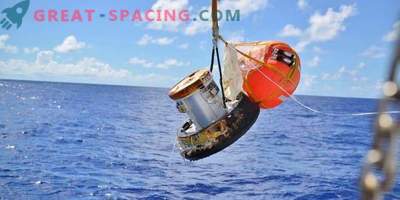
For the first time 40 years ago in October, images of the planet Venus were taken. The images are made by the spacecraft Venera-9. It turned out that the surface of the hellish world is not only red-hot, but also under great pressure.
The Soviet Union during the 1970s and 1980s sent several vehicles to its surface. The longest period of time that they managed to survive was two hours. Can we do anything to increase the time needed for research of the planet Venus? NASA specialist Jeffrey Landis believes that, in the end, the development of technology will allow it.
Landys is a researcher who works with the most advanced developments. In his opinion, it is necessary to study Venus, and he insists that the Glenn Research project of NASA needs to come to grips with this. For many years, Landis has been involved in the development of the Zephyr all-terrain vehicle, which could be moved across the surface of the planet with the help of wind power. More recently, Geoffrey and his colleagues at NASA Glenn began work on creating an environment that will be close to what actually exists on the planet Venus. This will give scientists the opportunity to test the all-terrain vehicle.
In an interview with Discovery News, Landis admitted that it would be quite difficult to land on the planet, as the temperature there is more than in an ordinary oven. At such a temperature, electronics with silicon components will not work and the robotics makers are faced with the primary task of finding a solution to this problem. Silicon tends to oxidize in a hot medium and, through damage to its structure, electrons penetrating from the outside will violate its conductivity. He put forward several ideas on how to avoid it. One idea is to use silicon carbide, which is a semiconductor and can operate at high temperatures. It will still be possible to protect the electronics from overheating with a cooling jacket, but it must be made of a fairly durable material to withstand the enormous pressure.
It is also possible that in the future, scientists in robotics will be able to ensure that devices do not touch the surface at all. Another group of scientists from the NASA Langley Research Center project suggested that small ships with people could conduct research on the planet in temperate latitudes, somewhere at an altitude of 35 km - 50 km above the surface, as the pressure of the atmosphere at that altitude decreases significantly and becomes similar to earthly. Due to this, its composition also changes. If carbon dioxide dominates over the surface, then the farther away from it, the more the atmosphere is saturated with oxygen.
Jeffrey Landis believes that instead of sending spacecraft to Mars, which is already extensively studied with the help of the rover, you need to explore Venus. The planet is full of secrets, the study of which is vital for humanity, even despite the high costs associated with it. In the upper atmosphere is full of particles that absorb ultraviolet light. No one knows anything about them. Some scientists put forward incredible theories that these are microbes or even life forms. Landis says that in the lower layers of the planet strong winds are blowing at a speed of several hundred kilometers per hour. And adds that when we get a complete picture of the atmosphere of Venus, we can learn more about the greenhouse effect and its effect on the Earth.
The duration of the Venus Express satellite has recently expired. So far, no one is interested in sending other spacecraft to the orbit of the planet Venus, except for the Japanese company Akatsuki. The company had already sent its satellite there in 2010, but due to engine problems, he passed by. Therefore, they are going to send the same again in December. NASA also considers two proposals for proposed missions to Venus, they are shortlisted at the end of last month.











































